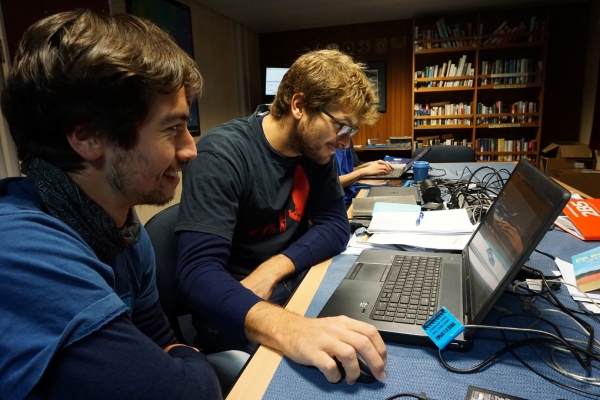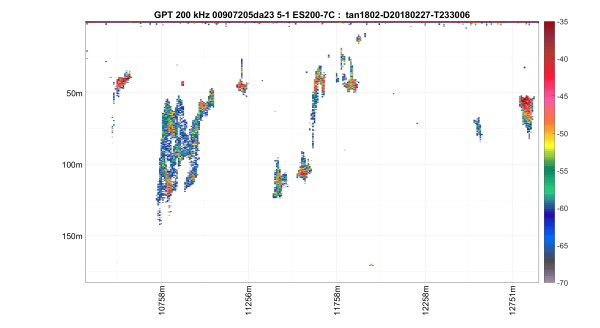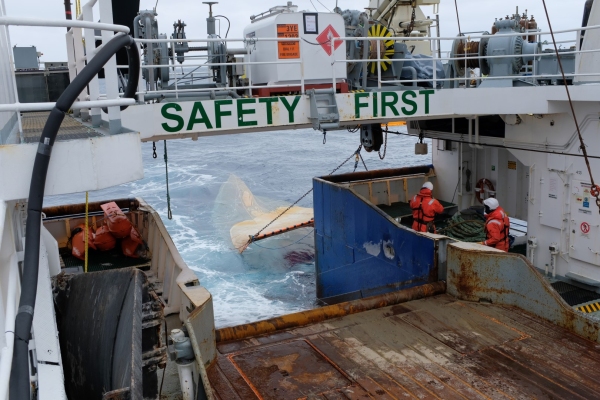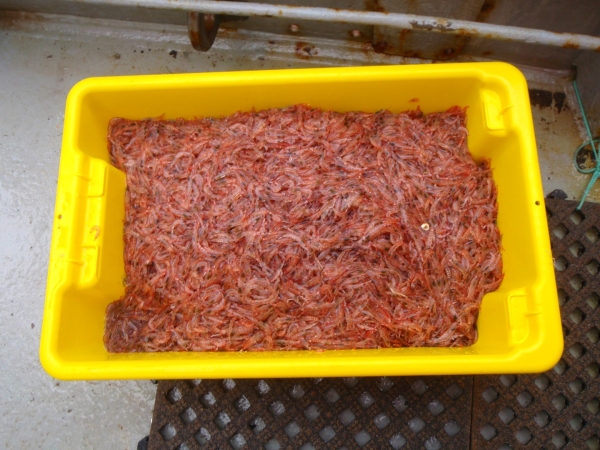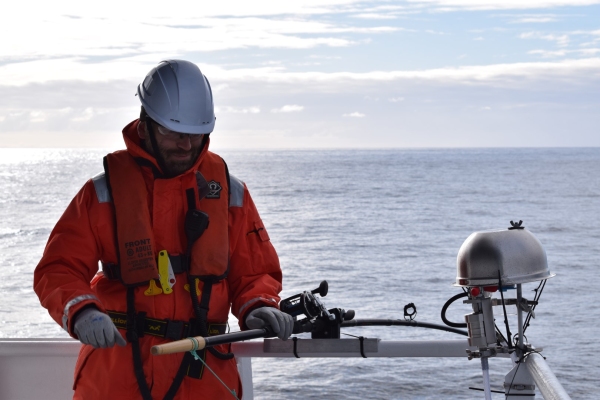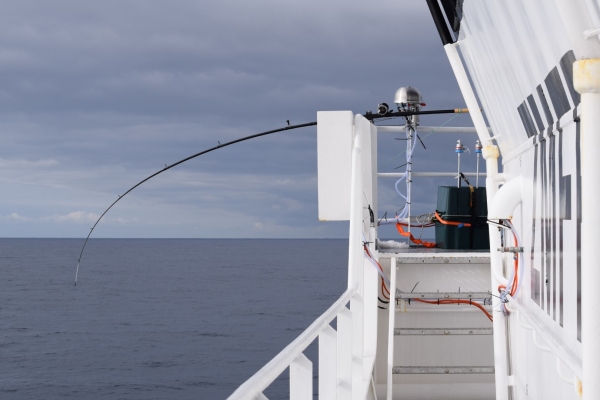28 February 2018
We are slowly zigzagging our way north up Iselin Bank as the mesopelagic team have been running their giant fish finder, the EK60.
The EK60 is a multi-frequency echo-sounder mounted on the hull of the Tangaroa, which by sending out sound pulses into the water and listening to their return echoes allows the team to detect, visualise, and record the presence of krill, fish, and other organisms in the water column.
NIWA’s Yoann Ladroit and Pablo Escobar-Flores are hoping to see acoustic marks on their echograms during the acoustic monitoring transect, which will indicate that a large swarm of krill or layers of mesopelagic fishes (lanternfish or silverfish) are below the ship.
Krill swarms show up as an acoustic mark at a particular frequency so they are easy to distinguish from the fish, but fish species are trickier to split from each other - the depth, shape and strength of response can help indicate different species groups.
The mesopelagic team will use acoustic backscatter data from this trip, with data collected from previous years of Antarctic surveys, to learn about the distribution and abundance of prey organisms, model the ecosystem, and study predator-prey interactions in the Ross Sea.
Pablo spotted an acoustic mark for a krill swarm between 20-130 m deep, so to check it was really there, the crew deployed a Rectangular Midwater Trawl in that spot. We were happy to see that the acoustics is telling us the right story, with a fish-bin full of krill and a few salps in the cod end of the net.
The samples were rushed down to the lab where they have been weighed and measured so that the strength of acoustic echoes can be translated into estimates of krill biomass. Not long after we found the krill we came across some humpback whales, so everything clicks now… but more about the whales another day.
Every so often the EK60 echosounder needs to be calibrated, and to do that the mesopelagic team, helped by the crew, suspend a special calibration sphere under the hull of the ship. The sphere needs to be positioned accurately in the centre of the echosounder beams, which is a tricky thing to accomplish at sea. The sphere is suspended on lines from three fishing rods fixed to the port and starboard sides of the ship, and with good radio communication and much patience, carefully manouvered into the centre of the beams. It’s pretty tricky, but luckily we have some adept fishers onboard!

